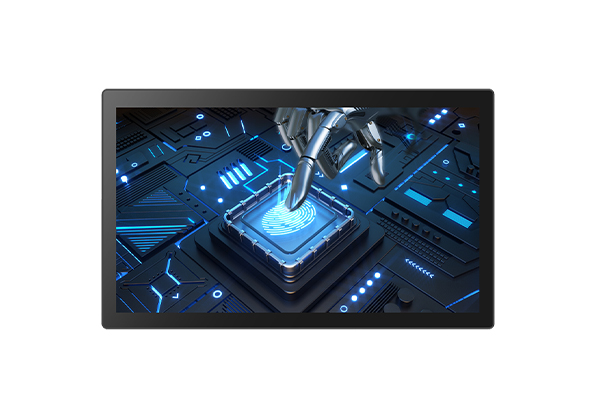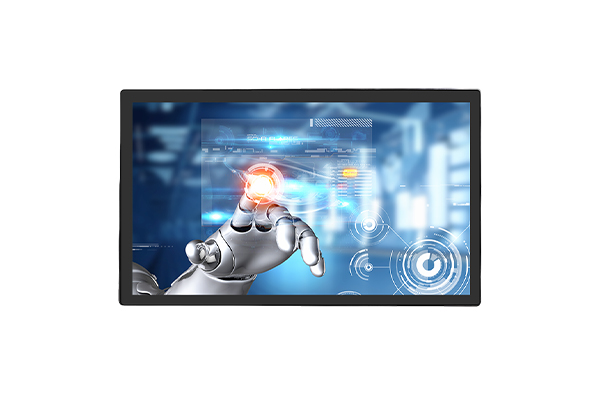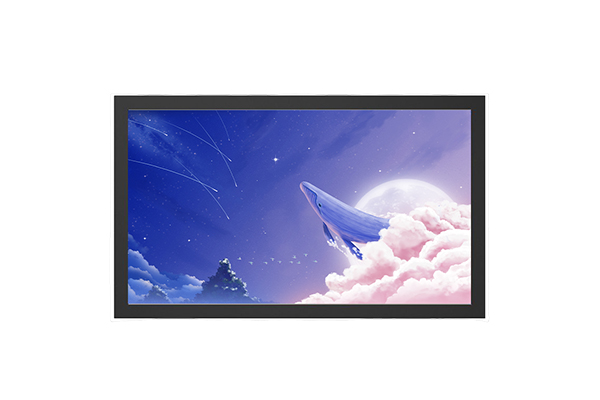The open frame touch monitor has good heat dissipation performance. Can it avoid overheating and crashing if it is left on for a long time?
Release Time : 2025-09-02
Open-frame touch monitors have excellent heat dissipation performance, which plays a crucial and significant role in preventing overheating and freezing when powered on for extended periods. However, whether this issue can be completely avoided depends on a comprehensive consideration of actual usage scenarios and device maintenance. First, it's important to understand the operating characteristics of open-frame touch monitors. These devices are often used in public or industrial environments and must remain powered on for extended periods to meet continuous interaction needs. Examples include shopping guide screens in shopping malls, operation panels in industrial workshops, and information kiosks in public places. This prolonged operation inevitably generates heat within the internal components. If this heat can't be dissipated quickly and accumulates within the device, it can cause core component temperatures to exceed safe thresholds, leading to performance fluctuations, lags, and, in severe cases, freezes.
Open-frame touch monitors with excellent heat dissipation performance are often designed with targeted optimizations for efficient heat dissipation. For example, the housing material may be made of a more thermally conductive metal, or specialized heat dissipation structures may be installed in key heat-generating areas (such as the motherboard and display driver module) to quickly transfer heat generated by the components to the housing or heat sink. Furthermore, appropriate internal heat dissipation channels are reserved, and combined with the inherent airflow advantages of the open design, these channels allow outside air to flow more smoothly through the device, dissipating heat and reducing heat accumulation around the components. This design ensures that even when the device is powered on continuously for hours or even dozens of hours, the temperature of core components remains stable within a safe operating range, preventing component failure or protective shutdowns caused by high temperatures.
From the perspective of internal component operation, the core components of an open-frame touch monitor, such as the processor, display backlight module, and touch control chip, continuously consume power and convert it into heat during extended operation. If heat dissipation performance is insufficient, the temperature of these components will gradually rise. When the temperature exceeds the design tolerance limit, the component will trigger a protective mechanism, either reducing the operating frequency to reduce heat (which may result in slower touch response and display lag) or directly shutting down to prevent damage. This is commonly known as an "overheating shutdown." Devices with excellent heat dissipation performance can quickly dissipate the heat generated by these components in real time, keeping components within the optimal operating temperature range. This prevents overheating from triggering protective mechanisms and maintains stable operation, significantly reducing the likelihood of overheating and freezing.
However, it's important to note that excellent heat dissipation performance is only an important prerequisite for avoiding overheating and freezing, not the sole factor. For example, in extremely high-temperature environments—for example, if an open-frame touch monitor is installed in an unaired industrial workshop during summer, or directly exposed to the scorching sun outdoors—the inherently high temperature of the environment can significantly increase the heat dissipation pressure on the device. Even with excellent heat dissipation design, the heat dissipation efficiency may be partially offset by the ambient temperature. In such cases, cooling measures (such as installing a sunshade or improving ventilation) are still necessary to better prevent overheating. Furthermore, dust accumulation can also affect heat dissipation. While an open-frame design facilitates air circulation, it also allows dust to adhere to heat dissipation components (such as heat sinks and vents). If left uncleaned, a dust layer forms, hindering heat conduction and air flow, ultimately weakening heat dissipation performance. Even the most effective heat dissipation can still lead to overheating and freezing due to dust accumulation. There's also the device's operating load. If an open-frame touch monitor is kept under high load for extended periods, such as continuously playing high-definition video or frequently processing numerous interactive commands, the heat generated by the internal components will significantly increase compared to when running at low loads. This puts a greater strain on the cooling system. If the cooling performance can only handle typical loads, there's still a risk of overheating and freezing under high load.
An open-frame touch monitor with excellent heat dissipation can fundamentally improve the device's ability to handle the heat from prolonged operation, significantly reducing the likelihood of overheating and freezing, and is crucial for ensuring continuous and stable operation. However, to completely avoid this problem, users must take appropriate precautions in actual use. For example, install the device in a well-ventilated and temperature-controlled environment, avoiding extreme heat or confined spaces; regularly clean the device, especially removing dust from heat dissipating components to maintain unobstructed heat dissipation; and manage the device's operating load appropriately to avoid prolonged high-load operation. Only by combining excellent heat dissipation with effective maintenance can an open-frame touch monitor reliably avoid overheating and freezing during extended periods of operation, ensuring continued interactive functionality.









